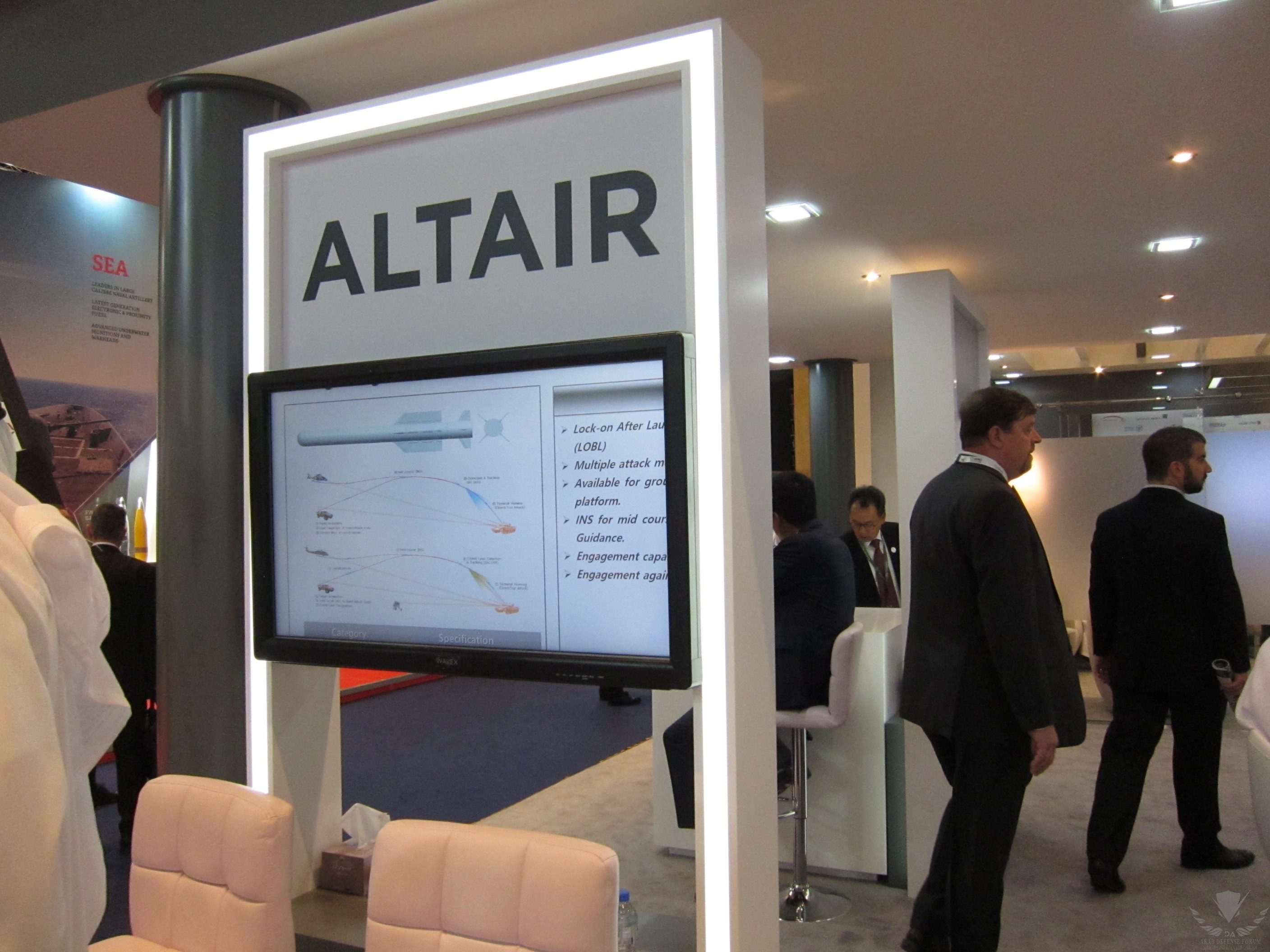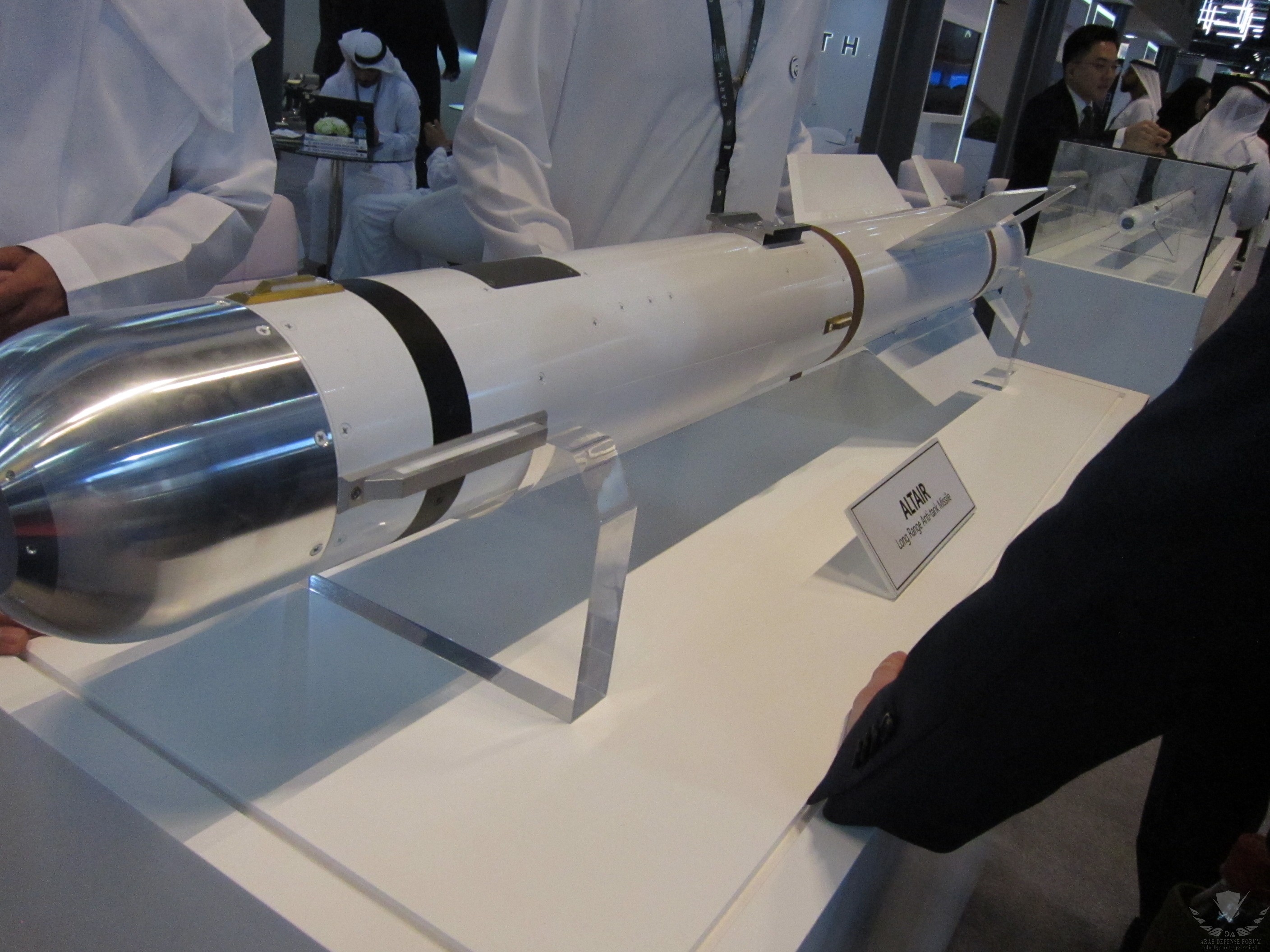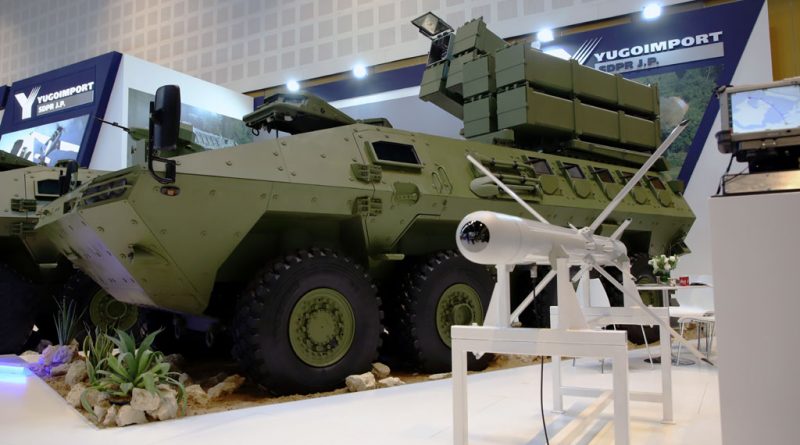الف مبروك علينا الصاروخ الاماراتي الجديد ...
اضافة ممتازة للصواريخ الاخرى كالنمرود ولدغة الصحراء .... عقبال المزيد والاقوى ان شاء الله ..
ايضا هناك صاروخ آخر عملت عليه EARTH وهو الـ ALAS
Uncategorized
IDEX 2019: Yugoimport, from ALAS to RALAS
23/02/2019 ALAS,
EARTH,
Lazar 3,
RALAS,
UAE,
Yugoimport
23 February 2017
By Paolo Valpolini
Yugoimport, the main Serbian defence company, unveiled at IDEX a new antitank missile, the RALAS. This follows the ALAS (Advanced Light Attack System), a long-range fibre-optic guided missile designed to cope with tanks and hardened targets. With a range of up to 35 km the ALAS is powered by a turbojet engine, a rocket booster being added for the launch phase. An anti-ship version, was to be co-developed with UAE’s EARTH (
Emirates Advanced Research and Technology Holding), while the ALAS was demonstrated during an exercise on board a Hafeet 6×6 vehicle, produced by Nimr of the UAE, showing the strong ties between this missile project and the Emirates.

It thus does not come as a surprise the fact that Yugoimport unveiled its new RALA at the Abu Dhabi exhibition. Compared to the ALAS the RALAS drops the turbojet-rocket propulsion for an all rocket propulsion, the RALAS being thus longer and heavier than the ALAS as it contains both the booster and sustainer motor, making it a 67 kg weapon with a 2,460 mm length, the diameter remaining the same, 175 mm, which is also the same of the Lorana, the latter having apparently never been produced; this allows to exploit the warheads already developed helping in reducing cost. The propulsion choice is obviously another move to keep down costs, although this reduces the range to 10 km; according to Yugoimport engineers the range might be slightly higher, tests having already been carried up to over 10 km, compared to the 35 km reached with the ALAS, minimum effective range being 3 km. The aerodynamic configuration is also different, the RALAS adopting ailerons for flight control instead of the canards used in the ALAS; this should reduce slightly manoeuvrability while increasing stability. Cruising speed is between 120 and 150 m/s, which means an average flight time of around 80 seconds to the maximum range.

Two different seekers are available; the imaging infrared uses either a contrast or a correlation algorithm, depending on the type of target, while the less expensive TV seeker uses a correlation algorithm. The first phase of the flight is planned via waypoints the missile using the INS/GPS navigation unit, the seeker being switched on in the last 2-3 km, images being relayed to the operator via fibre-optic, the same solution adopted on the ALAS that allows avoiding jamming issues. Should the gyrostabilised seeker loose the target, re-tracking can be done either automatically or manually, this capability having been demonstrated at the exhibition, blinding the seeker for a short instant.

The 10.5 kg warhead is either a tandem shaped charge capable to penetrate over 1,000 mm RHA, or a blast fragmentation one with a 25 meters lethal radius.
The system was shown installed on a Yugoimport Lazar 3 APC; this had at the rear two independently elevating systems each one carrying two modules, each one be made of two RALAS launch canisters, the total weight of the elevating modules fitted with the four two-missiles canisters being slightly over 2 tonnes. Maximum elevation is 45° while no traverse being needed the vehicle being positioned in the rough direction of the target.
https://www.edrmagazine.eu/idex-2019-yugoimport-from-alas-to-ralas
هذا الصاروخ الجميل سبق وعرضته الشركة في جناحها
هنا الاشتقاق C المخصص للدفاع الساحلي مركبا على النمر
لكن المثير للاهتمام هو امكانية استخدامه للهجوم الارضي وايضا مضاد للدبابات
امكانيات وتخصصات واعدة ومستقبل كبير اتوقعه لصناعة الذخائر المحلية ان شاء الله ....










